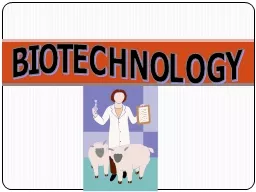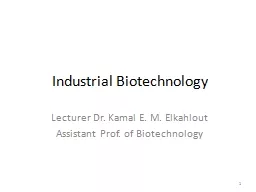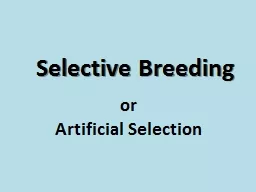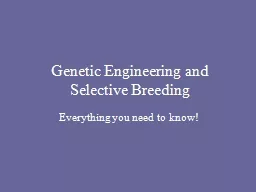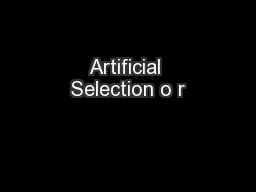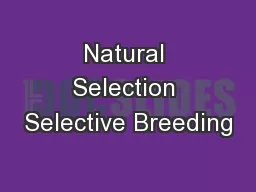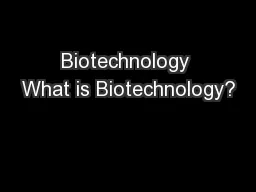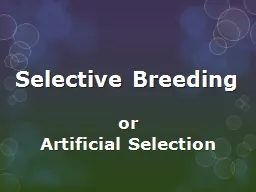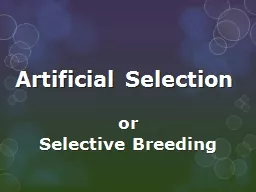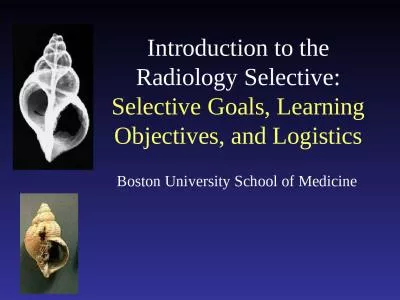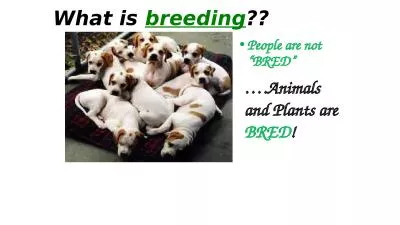PPT-BIOTECHNOLOGY I. Selective Breeding
Author : debby-jeon | Published Date : 2018-09-21
1 Selective breeding The process by which desired traits of certain plants and animals are selected and passed on to their future generations Breed only those
Presentation Embed Code
Download Presentation
Download Presentation The PPT/PDF document "BIOTECHNOLOGY I. Selective Breeding" is the property of its rightful owner. Permission is granted to download and print the materials on this website for personal, non-commercial use only, and to display it on your personal computer provided you do not modify the materials and that you retain all copyright notices contained in the materials. By downloading content from our website, you accept the terms of this agreement.
BIOTECHNOLOGY I. Selective Breeding: Transcript
Download Rules Of Document
"BIOTECHNOLOGY I. Selective Breeding"The content belongs to its owner. You may download and print it for personal use, without modification, and keep all copyright notices. By downloading, you agree to these terms.
Related Documents

